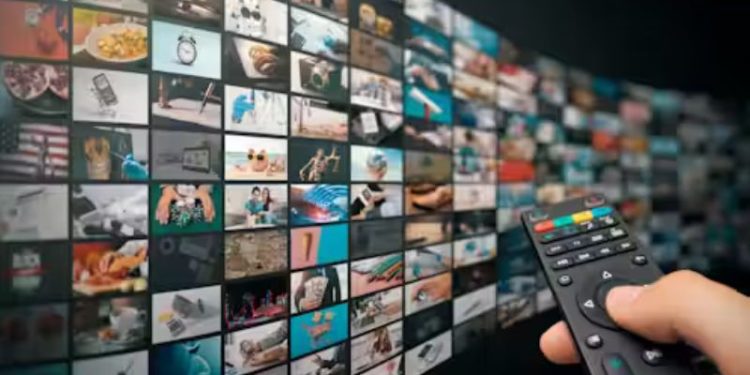Family movie nights have evolved from renting DVDs to an immersive home entertainment experience, thanks to technological advancements. This blog post examines the changing landscape of home entertainment, focusing on trends and technologies that enhance how we enjoy content. Whether you’re a movie enthusiast or a casual viewer, you’ll find valuable insights into this exciting new era.
1. The Rise of Streaming Services
Streaming services have become the go-to source for on-demand content. No longer tied to rigid TV schedules, viewers have the freedom to watch what they want, when they want.
This shift has fundamentally altered traditional media consumption, allowing for greater choice and flexibility. With a plethora of platforms offering everything from blockbuster movies to niche documentaries, there’s something for everyone.
One significant impact of streaming services is the decline of cable TV. Many households are cutting the cord, preferring the vast content libraries and cost-effective subscription models offered by streaming platforms.
The ability to binge-watch entire series without commercial interruptions has also contributed to their popularity. Additionally, the rise of original content produced by these services has set new standards for storytelling and production quality.
Another factor driving the success of streaming services is cross-device accessibility. Whether it’s on a smart TV, tablet, or smartphone, viewers can seamlessly switch between devices without missing a beat.
This convenience factor allows users to enjoy their favorite shows and movies on the go, further solidifying the dominance of streaming in the home entertainment landscape.
2. Home Theaters Evolving
Gone are the days of basic TV setups. Home theaters have evolved into sophisticated entertainment hubs that rival the cinematic experience. With advancements in audio and visual technology, homeowners can now enjoy immersive viewing right in their living rooms. Enhancements such as surround sound systems and high-definition projectors elevate the quality of in-home movie nights.
One of the driving forces behind the evolution of home theaters is the affordability of advanced technology. What was once considered a luxury is now accessible to many households.
High-quality sound bars, 4K displays, and wireless speakers are just a few examples of how technology has made it easier to create a theater-like experience at home. These devices offer crisp audio and stunning visuals, making viewers feel as though they are part of the action.
Another trend contributing to the rise of home theaters is the increase in content tailored for high-definition screens. Filmmakers and content creators are optimizing their productions for home viewing, enhancing the quality of both visuals and storytelling.
This focus on delivering exceptional content has encouraged more people to invest in home theater systems, further driving the demand for innovative gadgets and setups.
3. Smart Home Integration Enhancing Experiences
Smart home technology is revolutionizing the way we interact with our entertainment systems. From voice-activated assistants to interconnected devices, the integration of smart technology has made accessing content more convenient than ever. It’s now possible to control your entire setup with a simple voice command, creating a seamless viewing experience.
One of the key benefits of smart home integration is the ability to personalize settings and automate routines. Users can create custom profiles tailored to their preferences, ensuring that their favorite shows and movies are easily accessible.
Additionally, smart home technology enables users to sync their lighting and audio systems with their viewing habits, creating an immersive atmosphere that enhances the overall experience.
Another aspect of smart home integration is the potential for energy efficiency. By automating power usage and optimizing device performance, smart technology can help reduce energy consumption and lower utility bills.
This eco-friendly approach not only benefits the environment but also saves money in the long run, making it an attractive option for homeowners looking to upgrade their entertainment systems.
4. The Future of Home Entertainment
The future of home entertainment is full of exciting possibilities. With ongoing advancements in technology, we can expect even more innovation in the way we consume media.
One emerging trend is the use of simulators, which provide an interactive and immersive experience that goes beyond traditional viewing. These devices allow users to engage with content in new and exciting ways, like driving or even golf simulators that let users enjoy at home.
Virtual and augmented reality are also expected to play a significant role in the evolution of home entertainment. By blending digital and physical worlds, these technologies have the potential to create entirely new experiences that redefine how we interact with content. From virtual concerts to interactive storytelling, the possibilities are endless.
Artificial intelligence is another area poised to impact home entertainment. With the ability to analyze user preferences and recommend content based on viewing habits, AI-driven algorithms can enhance the personalization of entertainment experiences.
This tailored approach ensures that viewers are always discovering new content that aligns with their interests, making for a more engaging and enjoyable experience.
Conclusion
The world of home entertainment is undergoing a remarkable transformation. With the rise of streaming services, the evolution of home theaters, and the integration of smart home technology, we’re living in an era where convenience and personalization are at the forefront. These advancements not only enhance the way we enjoy content but also provide exciting opportunities for consumers and content creators alike.
















